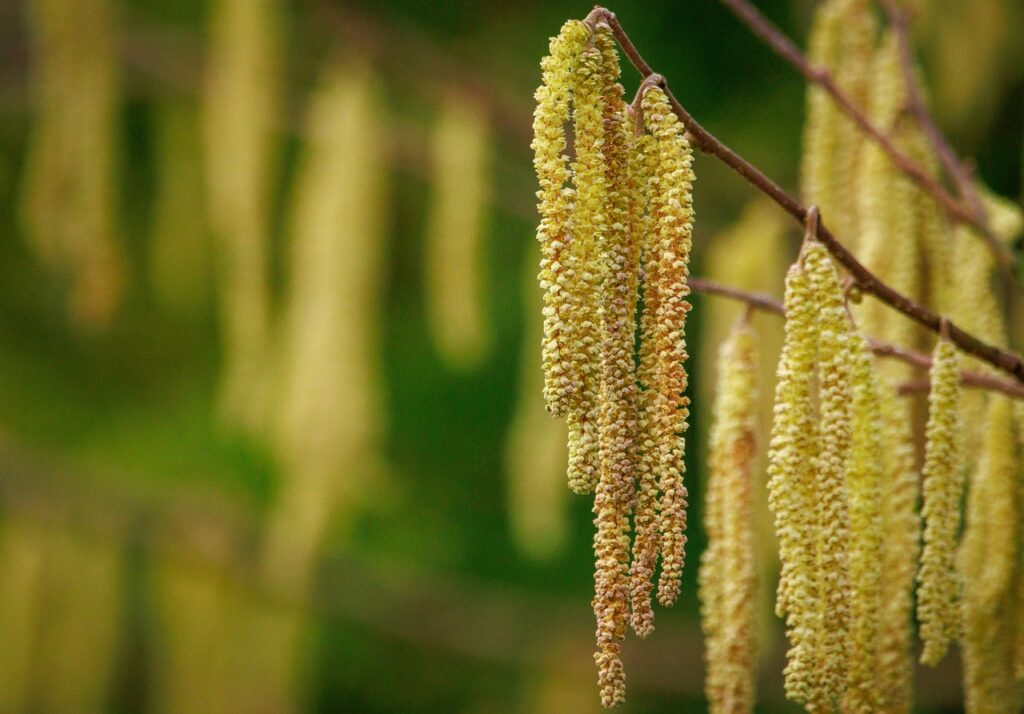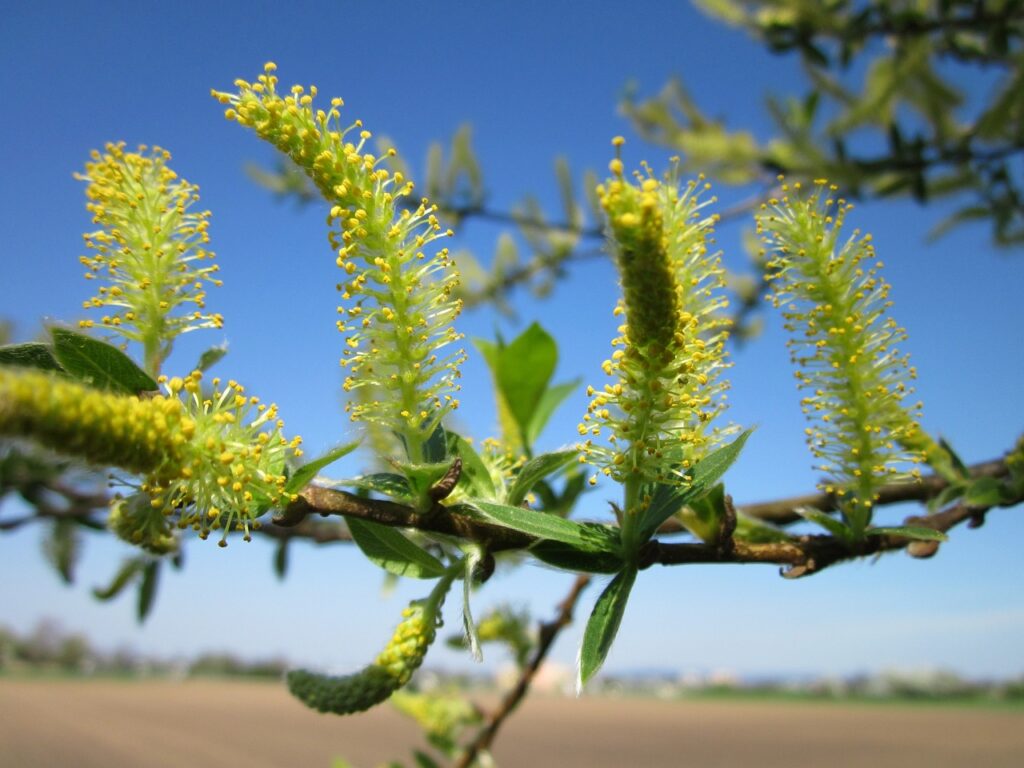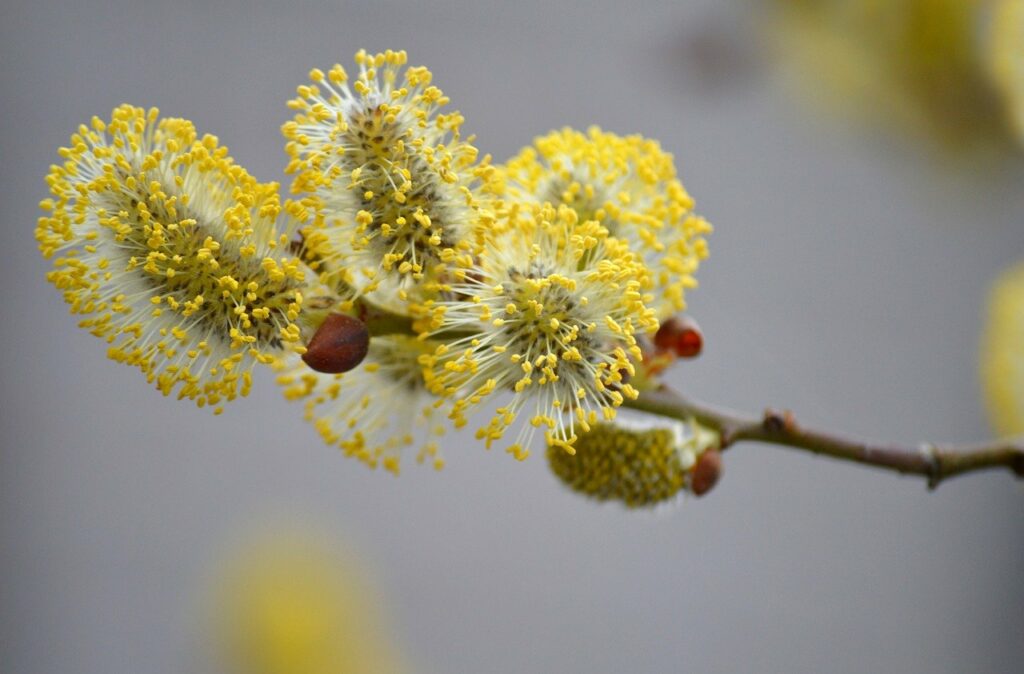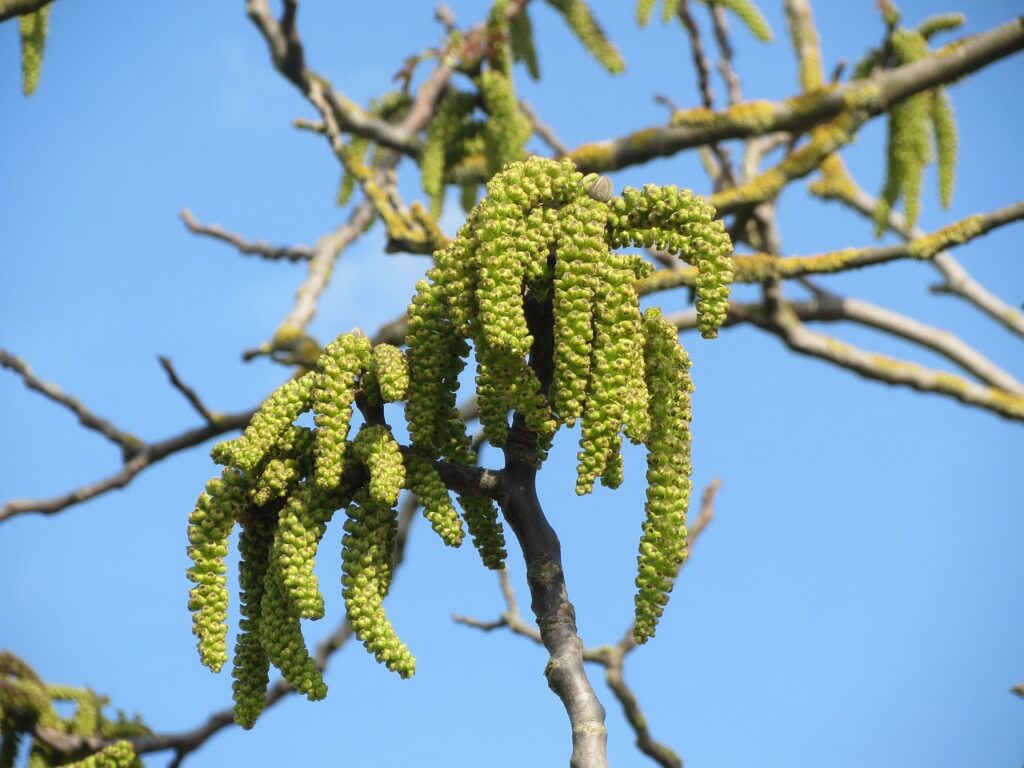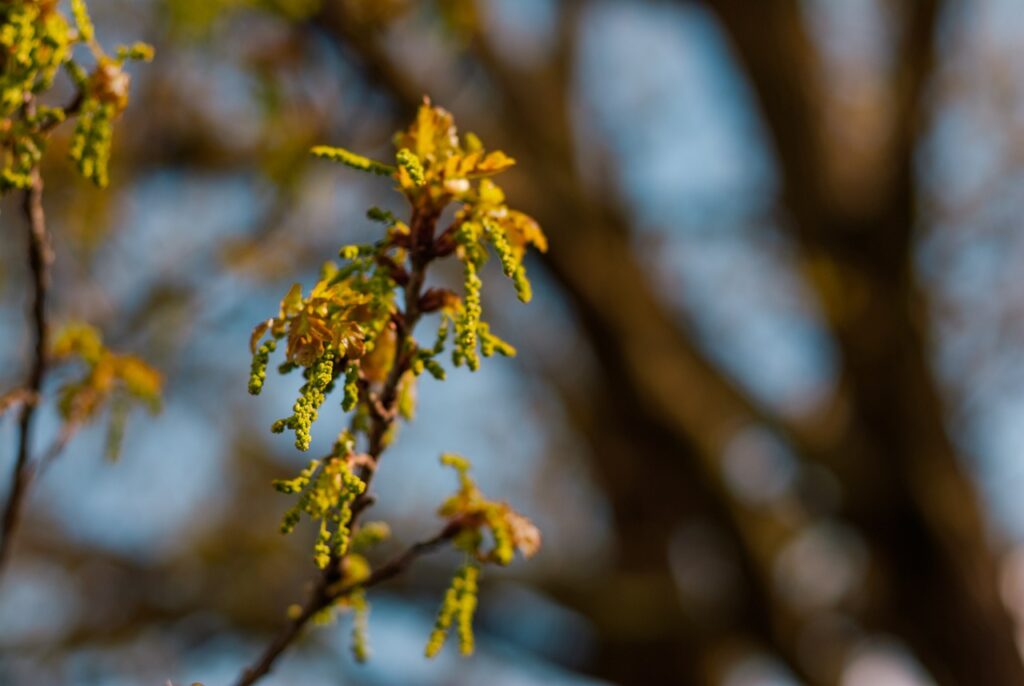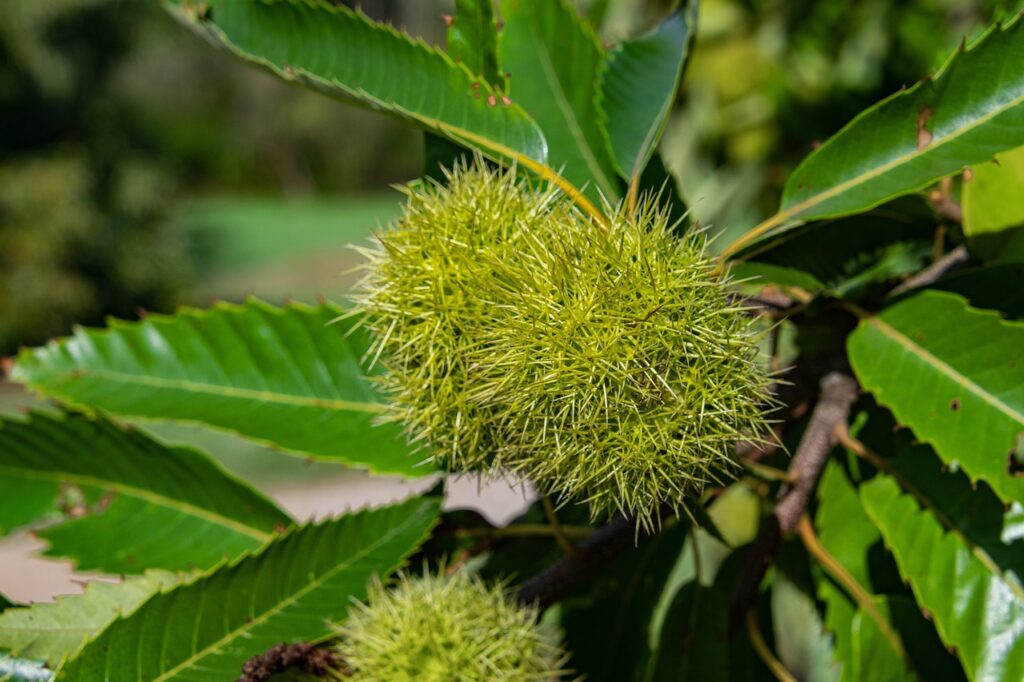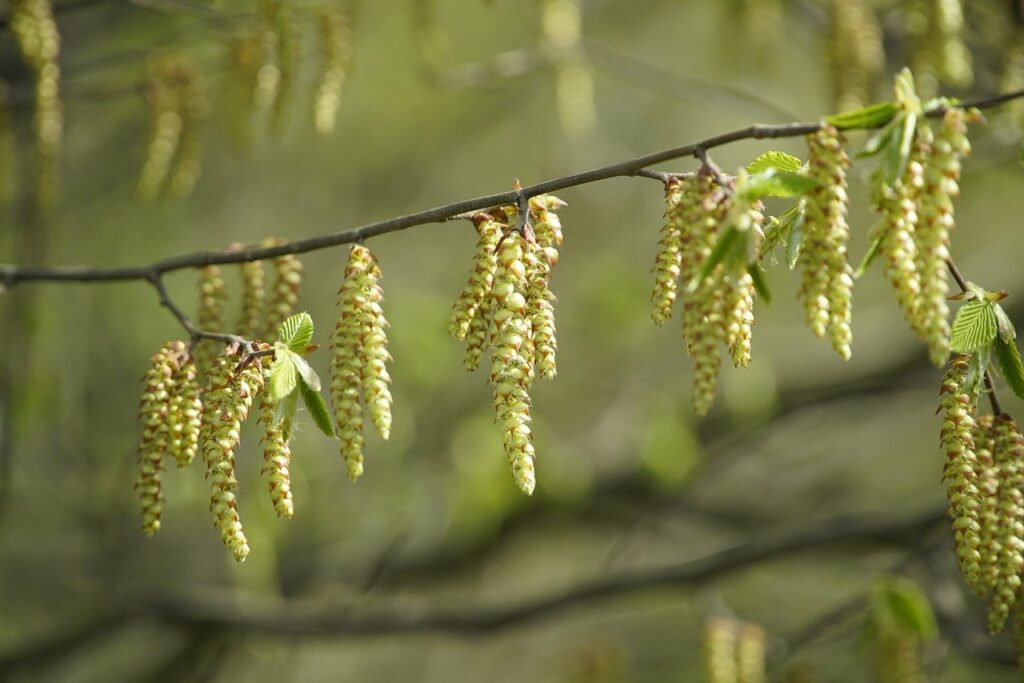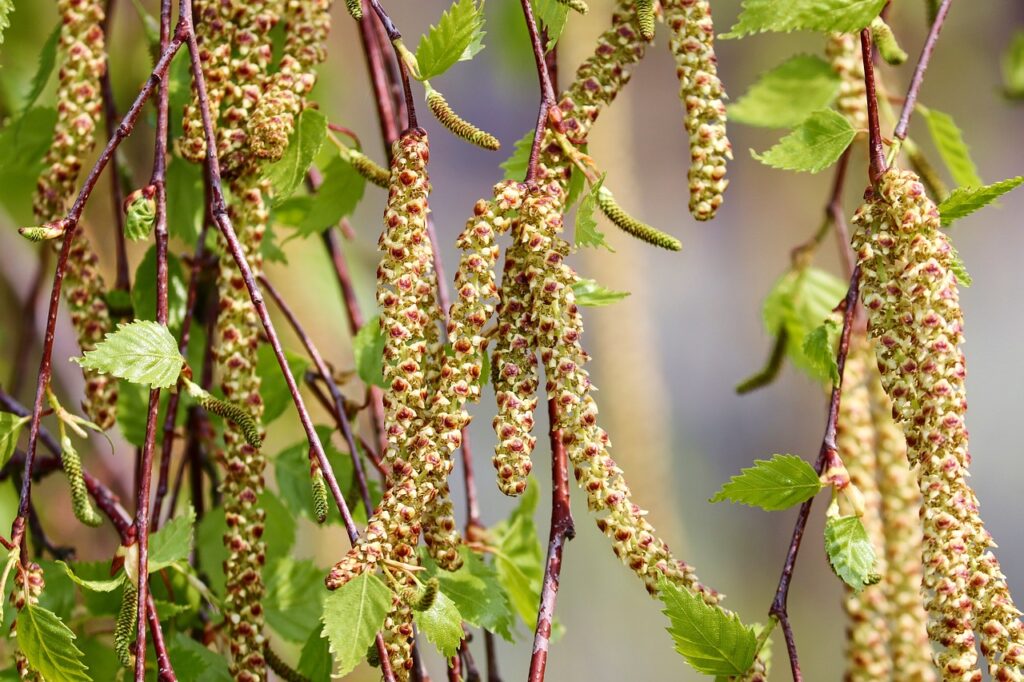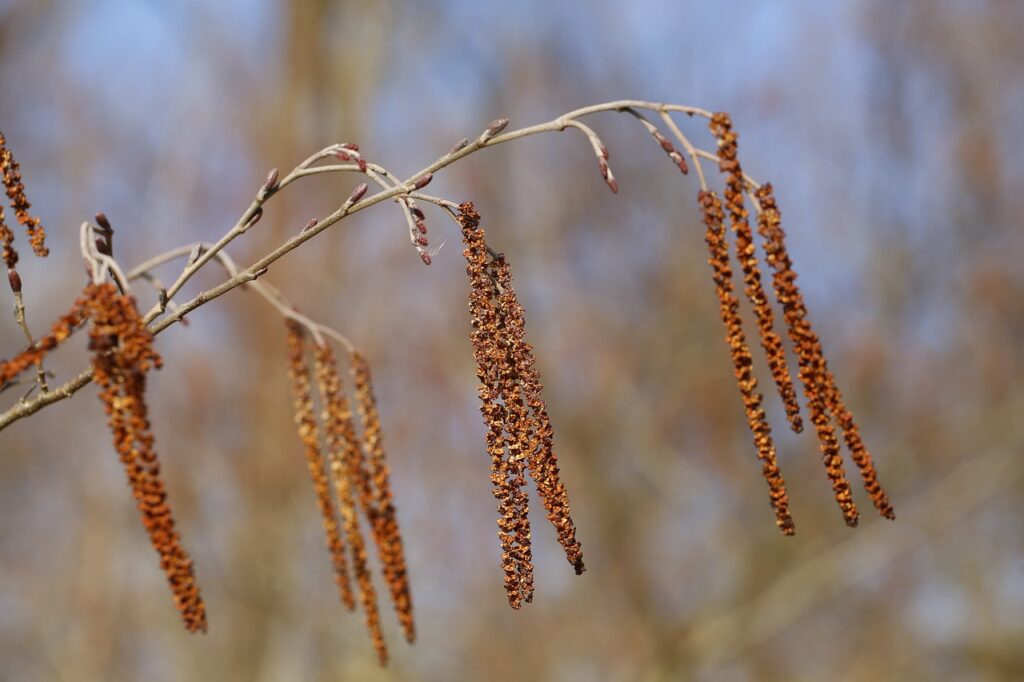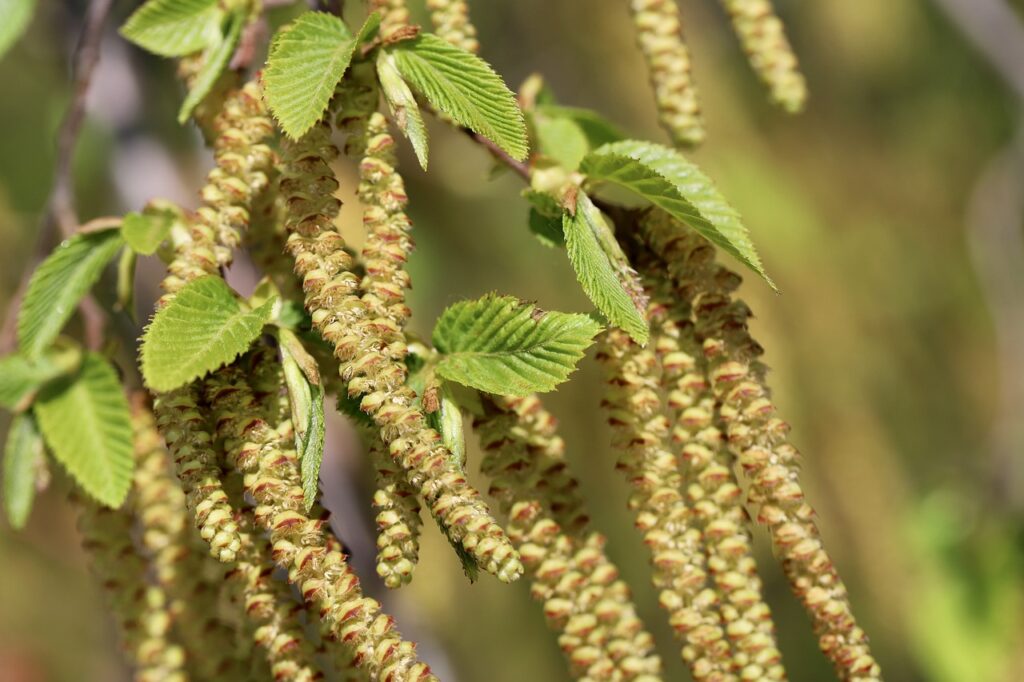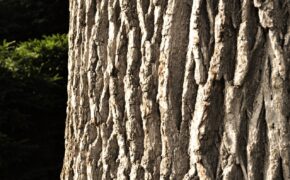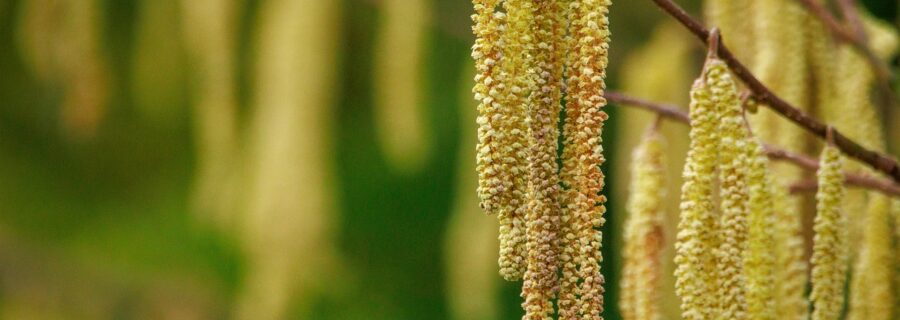
Get a quick no obligation quote It’s free and will only take a jiffy!
Tree Catkins: The Ultimate Identification Guide
Have you ever noticed the slim clusters of tiny flowers that grow on some trees? These are known as catkins. In this article, we’ll explore which trees have catkins and why, and when you can expect to spot them in bloom.
What are catkins?
Catkins are part of a tree’s reproductive system. They are slim clusters of flowers without petals, sometimes with a spiky appearance.
The hanging structures release grains of pollen, which are picked up and carried by the wind.
Once the pollinated seeds have grown, they are dispersed by the wind. This prevents them from growing directly beneath the parent tree. The exception to the rule is the willow tree, which uses insects for pollination instead of wind.
Some species, such as oak, bear both male and female single-sex catkins on the same tree. These are known as monecious. Others, such as poplar, bear male and female catkins on separate trees. These are known as dioecious.
The likes of hazel only bear male catkins plus female flowers. Sweet chestnut is an exception to the rule, producing both male catkins and bisexual catkins with female flowers at the base.
When to see catkins?
Catkins begin to appear on trees during late winter to early spring. They grow before the leaves start to unfurl, so that the pollen does not get stuck in the leaves and is more likely to come into contact with the female flowers.
Catkins provide pollen and sometimes nectar at an otherwise scarce time of year for pollinating insects. They are also helpful when it comes to identifying trees before their leaves have appeared.
Which trees have catkins?
There are many UK native trees that bear catkins:
Hazel (Corylus avellana)
Hazel catkins appear in late winter and each can produce around eight million pollen grains. They resemble fuzzy lambs’ tails and are golden in colour, hanging in in clusters of tiny male flowers. Whilst hazel is monoecious, it is self-incompatible. This means that pollen needs to travel to the female flowers on a different tree. The female flowers are tiny clusters of red coloured stigmas that protrude from a bud. Once pollinated, it’s these buds that become hazelnuts in the autumn.
White willow (Salix alba)
White willow is dioecious. This means that the male and female flowers grow on separate trees. The catkins appear in early spring. The male ones are around 5cm long, and their female counterparts are shorter at around 3-4cm. Once pollinated by insects, the female catkins grown and develop small capsules containing tiny seeds encased in white down. These white, feathery attachments helps the seeds to float on the wind.
Goat willow (Salix caprea)
As with white willow, goat willow (also known as pussy willow) is dioecious. The male catkins are covered in golden stamens and appear in March and April, whilst the female catkins are green and spiky and develop a little later on separate trees. Both secrete nectar and so are an important source of food for pollinating insects.
Walnut (Juglans regia)
Female walnut catkins are upright, spiky clusters, whilst the males are pendulous. Both grow on the same tree. The catkins release pollen around May just as the leaves start to appear. Once the pollen is released, the catkins drop from the tree. The pollinated female flowers develop into green egg-shaped fruits that ripen in the autumn. Inside the fruits is an edible kernel protected by a hard outer shell. Otherwise known as the walnut!
English oak (Quercus robur)
English oak is monoecious. The male catkins are long, thin yellow-green structures that hang from the branches. Small, red female flowers grow on stalks ready to receive the pollen in the wind once it’s released in April and May. When pollinated, the female flowers develop into acorns.
Sweet chestnut (Castanea sativa)
Monoecious sweet chestnut trees produce both male and bisexual catkins with strongly scented male and female flowers grouped in three at the base. The yellow catkins are long – around 15cm – and appear in clusters. They produce both pollen and nectar, attracting pollinating insects. Once pollinated, the female flowers develop into spiny fruits which encase the sweet chestnuts.
Beech (Fagus sylvatica)
Beech trees product yellow male catkins in April and May. They hang from long stalks at the end of twigs, releasing pollen into the wind. The female flowers develop in pairs, also on stalks, on the same tree. Once pollinated, woody cups develop which enclose two small nuts.
Silver birch (Betula pendula)
Silver birch is monoecious. Yellow-brown male hanging catkins appear around April, releasing pollen to the smaller green female catkins. These point upwards until they are pollinated, at which point they start to hang downwards and turn red as the seeds develop. Lots of tiny seeds are released in the autumn and dispersed by the wind.
Alder (Alnus glutinosa)
Alder bears yellow-brown male catkins that hang from the branches and measure around 2-6cm in length. They emit pollen around February to march ahead of the leaves appearing. Smaller, red clusters of flowers also grow on the same tree. Once pollinated, they develop into green fruits then brown, woody structures that look like small pine cones. The seeds are released in autumn and can stay on the tree for a year or more.
Hornbeam (Carpinus betulus)
Monoecious hornbeam is wind pollinated. It bears pendulous green male catkins that measure up to 5cm in length. The catkins have red anthers that release pollen in April and May. The green female catkins are shorter at around 2cm. Once pollinated, the flowers develop into small buts in the autumn. Each is attached to a large, winger bract which makes the nut spin as it falls, aiding seed dispersal.
Caring for trees, year-round
Seeking professional help in caring for your trees? Our highly experienced, fully qualified, helpful experts here at TH Trees Ltd are ready to help. For personalised assistance, you are welcome to get in touch.
I can thoroughly recommend TH Trees. Their professionalism and communication has always been paramount. The jobs undertaken carried out to my satisfaction. Above and beyond.
Thank you Jo for your kind review, it's always a pleasure to be of assistance with your trees.

